Are there situations where fast fashion can be a useful option or perhaps even a better option than the types of clothing we usually champion here at the Gentleman’s Gazette? Let’s find out together!
What is Fast Fashion?
Before we break down the pros and cons of fast fashion, though, we first need to understand just what it is. The term “fast fashion” was first coined in the early 1990s when high street brand Zara came to New York City.
Why “fast fashion”? Well, Zara claimed at the time that it only took 15 days for one of their garments to go from initial design to store shelves. This, of course, was quite an impressive turnaround when standard manufacturing could take weeks, months, or even years in the past. But, although Zara may be credited with the origins of the term “fast fashion,” the overall concept actually dates back much further than the 1990s.
Mass manufacturing of garments has been around since the Industrial Revolution at the turn of the 19th century. Prior to the 1800s, clothing used to be made almost exclusively by hand; therefore, it took a considerable amount of time and effort to create even one garment.
With an average of 100 hours needed to hand sew a jacket without the aid of any machinery, you can imagine the cost to the consumer in both time and money. This meant that prior to the Industrial Revolution, the average person only had a small handful of outfits as it was simply too expensive and time-consuming to own several different ones.
While the wealthy could afford to have several different bespoke pieces in the works at the same time, your typical everyday person would likely subsist mostly on hand-me-downs or outfits that they had already been wearing for years.
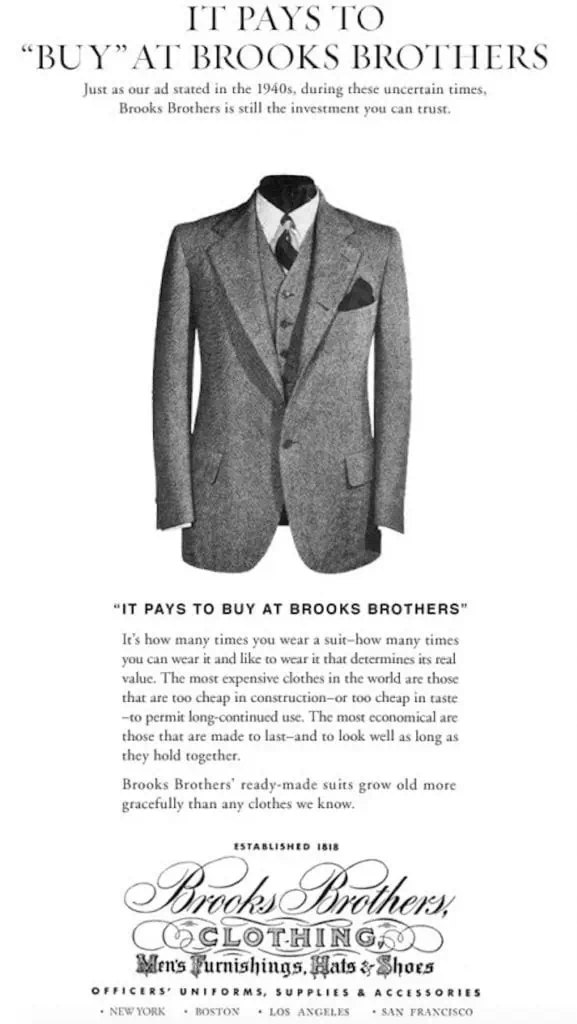
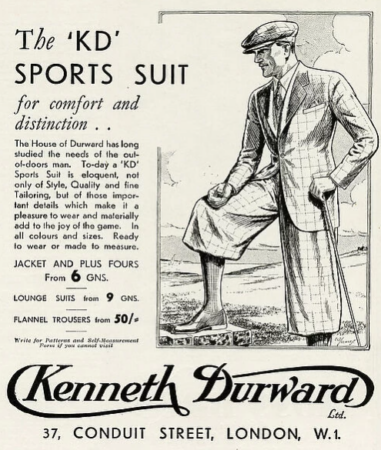
With the rise of factories and automation, though, department stores became increasingly popular, and the age of “bespoke-only” as the default for clothing started to come to an end. The early 20th century would see an even greater rise in the desire for ready-to-wear outfits, as can be seen in an advertisement from 1934, and storied brands like Brooks Brothers would come to champion ready-to-wear clothing as well.
Brooks Brothers: Their History & A Brand Evaluation
So, with the improvements of manufacturing capabilities in the coming decades, many people pin the true origins of fast fashion in the 1960s. Greater experimentation and more flamboyant styles required manufacturers to be quicker than they had been in the past and to offer lower prices than they had with bespoke garments.
Younger people and members of the counterculture movement didn’t have the time to wait around for a garment to be made as they wanted to capitalize on a clothing trend right when it was hot. This attitude continued through the 1970s and into the 80s with increased consumerism, more abundant synthetic fabrics, and yuppie culture, overall.
People wanted cheaper clothing alternatives and more freedom of expression, and, looking back on these decades, it certainly left us with some chuckle-worthy memories.
Coming up to the present day, fast fashion has shown no signs of slowing down in recent years, and it’s even become the default option for many, or perhaps even most people nowadays, as bespoke clothing falls more and more out of reach for many.
What is bespoke tailoring?
In its current context, you can think of fast fashion similarly to fast food. After all, it’s inexpensive, convenient, and designed to be consumed quickly, and also like fast food, it’s accompanied by ethical concerns about how potentially damaging it can be both to the consumer and to the environment.
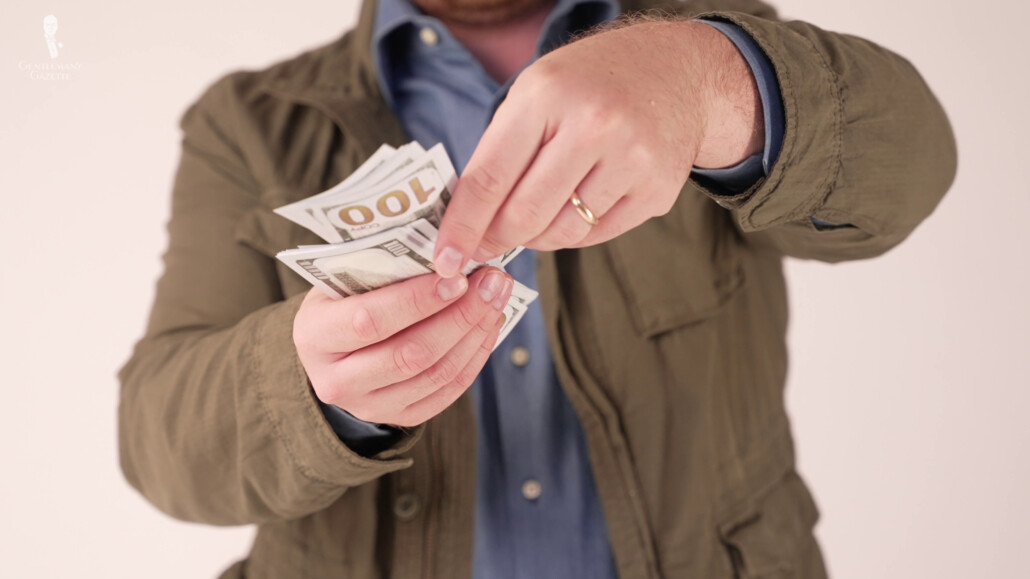
As Oscar Wilde once said, “Fashion is a form of ugliness so intolerable that we have to alter it every six months.” But in all seriousness, fast fashion becoming the de facto choice for how most people consume clothing does have some serious consequences.
The Concerns of Fast Fashion
1. Ecological Concerns
The sheer rate of production and volume of cheap clothing being made every year is putting a strain on the environment overall.
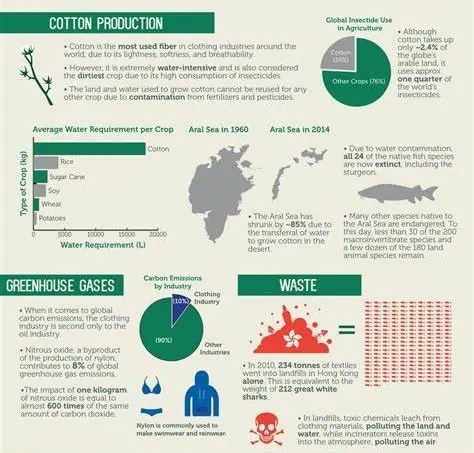
Clothing Industry
Wardrobe, Clothing and Accessories
Environmental Impacts
When you buy something using the affiliate links on our site, we may earn a small commission.
Collectively, large clothing production factories are responsible for around 10% of the industrial pollution we see today, according to some estimates. Production of nylon alone accounts for approximately 8% of global greenhouse gas emissions.
Also, mass harvesting of fibers for clothing like cotton and linen puts a strain on our agricultural system, and because businesses are always looking for cheaper ways to produce their goods, this also means that we’ve seen an increase in the production of synthetic fibers as well. But, these synthetics don’t biodegrade like natural fibers will and they don’t wear very well over time either.
All of this means that you’ll have to keep buying clothing more often to maintain that out-of-the-box look. This, in turn, takes clothing from being one-time investment purchases to more frequently bought consumables.
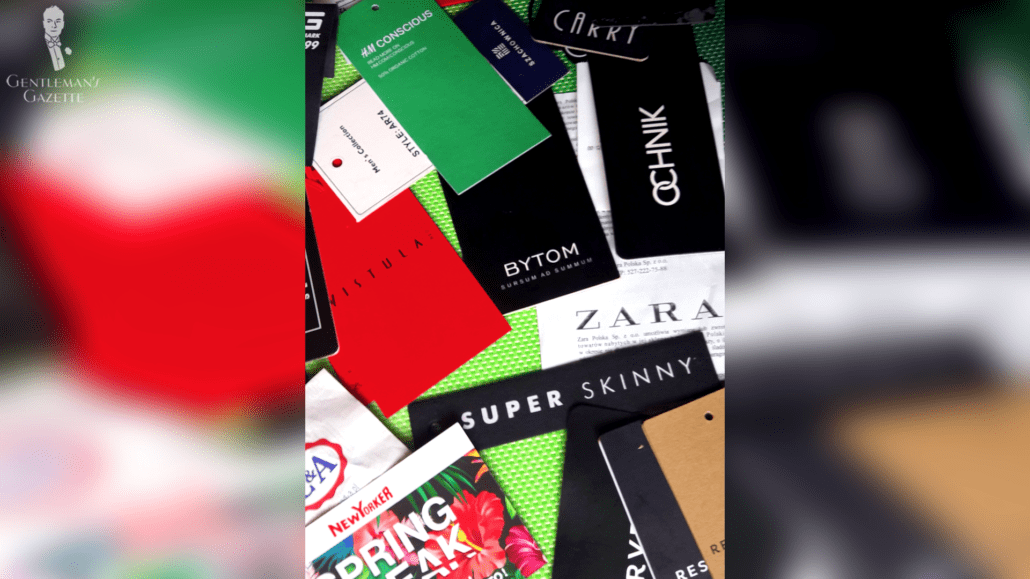
On top of all of this, fast fashion garments are often assembled from components originating in several different locations around the world. These all have to be shipped to the garment manufacturer, and many of the factories that produce fast fashion clothing are often located in developing countries far from the clothing’s eventual intended destination.
So, a seemingly simple three-dollar T-shirt has already racked up quite a carbon footprint in having its raw materials shipped to the factory and then having the finished shirt shipped to a brand’s warehouse. All of this before it eventually ends up in the consumer’s wardrobe.
How to Build a Green & Sustainable Menswear Wardrobe
2. Ethical Concerns
Further ethical concerns for fast fashion factor in when you consider that many companies have been put under scrutiny for the poor working conditions and low pay that their workers are subjected to. Some manufacturers intentionally choose countries of manufacture with fewer regulations to exploit workers or hiring practices further.
We’re not going to name any specific brands, but it’s no secret that things like child labor, work days of 12 hours or more, penalties for taking sick leave, and all other inhumane labor practices have been uncovered by regulators and investigative journalists. All this is to say that there is a correlation between the world of fast fashion and “sweatshop” manufacturing conditions.
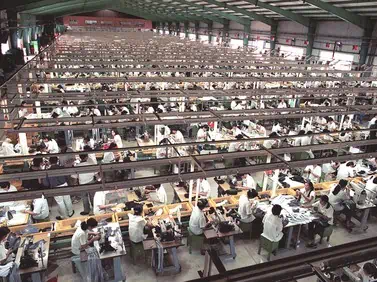
On a conceptual level, there’s also the concern of fast fashion brands essentially ripping off the work of accomplished, higher-end designers. Most clothing designers have to put in a considerable amount of time and effort in order to make their mark in the highly competitive fashion industry. But once they finally have their goods sold to the public, they often see them plagiarized and sold for a profit by someone else.
Keeping all of these concerns in mind, then, there are still plenty of reasons why fast fashion has become the default choice for so many consumers today. Chances are you probably aren’t visiting your tailor for sweatpants and gym clothes, for instance – unless you are, in which case, we admire your dedication and want to get in touch with your tailor.
Is ALL Fast Fashion Bad?
1. Fast Fashion is Inexpensive
The primary reason that most people buy into fast fashion is because it’s cheap. By its very nature, fast fashion clothing will be less expensive than higher-quality, higher-end clothing like a bespoke suit, so this can make fast fashion a good option if you’re looking to experiment with a new style or something that’s outside of your comfort zone.
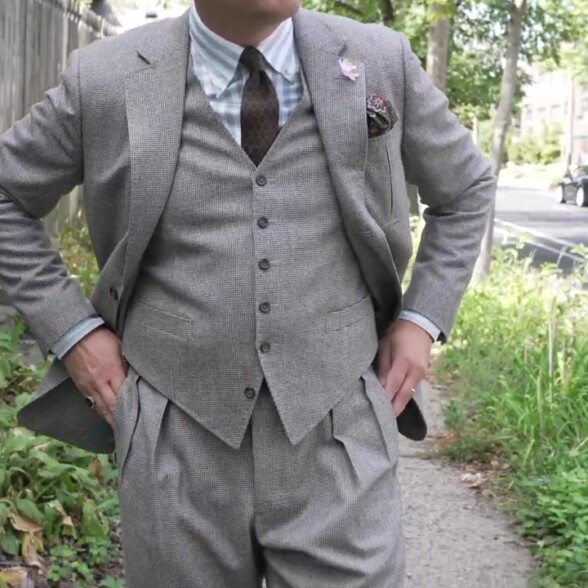
A Wise Choice For
Discovering Your Style
With fast fashion, you won’t be investing a large sum of money in a style that might not end up suiting you well. It allows you to experiment with different styles, colors, and details on a suit that costs $100 instead of multiple thousands will allow you to further develop your personal style for a lower overall cost.
Essentially, you can first figure out what you do and don’t like in clothing before settling on a higher-quality, higher-priced item. Plus, if you don’t end up liking what you bought, the upside is you won’t be out of a lot of money as it can be devastating to make a large purchase that you end up regretting, and it’s important to remember here that style and fashion are two fundamentally different things and as such, they require different approaches.
2. Fast Fashion is Convenient
The next major reason that people appreciate fast fashion is its convenience factor. Fast fashion can also be an excellent remedy if you have a clothing emergency. This is especially true when you’re traveling, as spilling sauce on your shirt, losing your luggage, or ripping your pants can all happen when you’re out on the road.

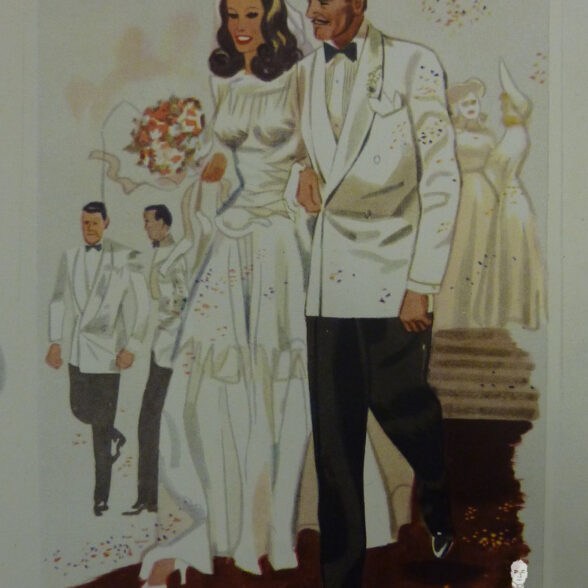
It even happened to
Raphael
Once, when Raphael was the best man at a friend’s wedding, the airline lost his checked bags so he had to start reassembling a new outfit from just what was in his carry-on luggage. Fortunately, though, he was able to round things out with a few ready-to-wear fast fashion pieces, and no one noticed that he wasn’t wearing the clothes that he had intended to wear.
Events might also come up where you need a very specific item in order to meet the dress code but said item isn’t something you’re going to wear often, if ever again. Therefore, it wouldn’t make sense in this case to buy something expensive as that garment would have an astronomical cost-per-wear.
Are rental tuxedos actually good?
As an example here, if you’ve only ever been invited to one Black Tie function, a fast fashion piece will cost around the same as a rental might, and you can at least keep your purchase after you’ve made it. With that said, though, even if you’re only going to attend one or two Black Tie functions in life, we still think it’s worth it to buy something of higher quality so that you can look your best.
But, even if you do have the capital and the willingness to invest in higher quality pieces, sometimes, a quick turnaround is beneficial, and if you need something right away, fast fashion might be the answer.
3. Fast Fashion is Good for Seasonal Clothing
Seasonal clothing is another scenario where fast fashion might be a good option for you. Certain areas in the world don’t have four distinct seasons, giving you a more limited ability to practice true scorpacciata. After all, a wardrobe that works well in Sweden wouldn’t necessarily work as well in Florida.
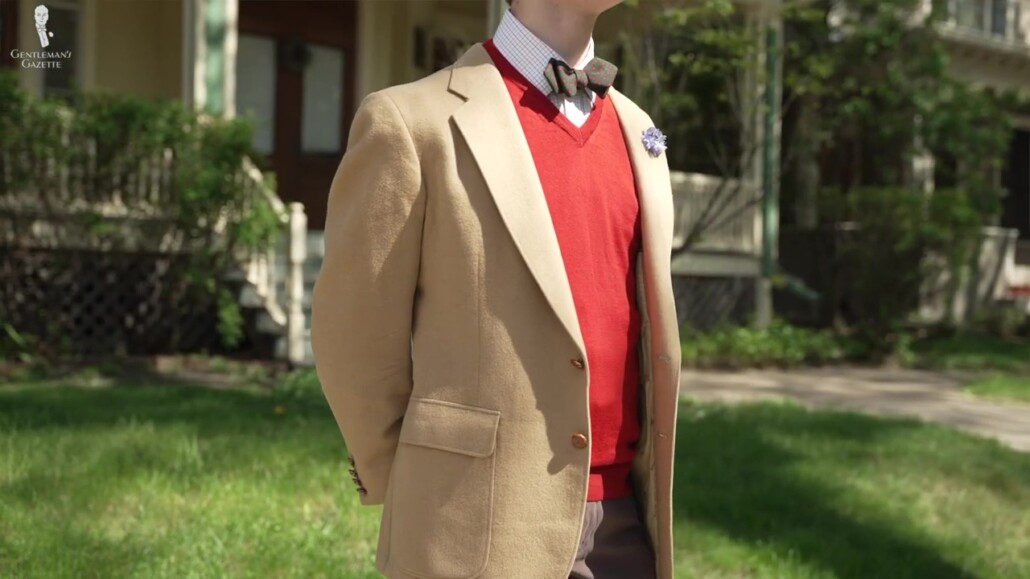
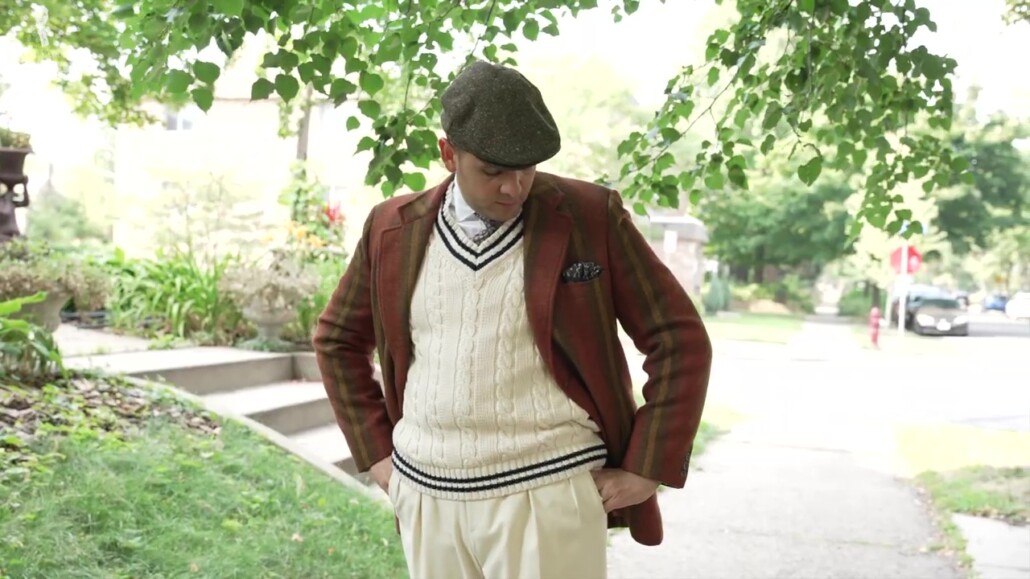
So, suppose you’re traveling to a markedly different climate for a limited amount of time. In that case, you might not necessarily want to invest a lot of money into clothing that will be appropriate for that climate but that you won’t be able to wear as often at home.
How to Incorporate Fast Fashion Well
1. Choose Well
In essence, it’s all about being selective with what you choose to wear. As a classic style enthusiast, you likely already have some idea of what you do and don’t like, and it’s important to remember that not all fast fashion is high fashion. In other words, not all of it is going to look hyper-trendy or like it came off a runway.
It’s entirely possible then to find unique gems that can fit into or subtly subvert the conventions of classic menswear, like a good floral tie, for instance, and for an example of something that can blend more seamlessly with a classic menswear wardrobe.
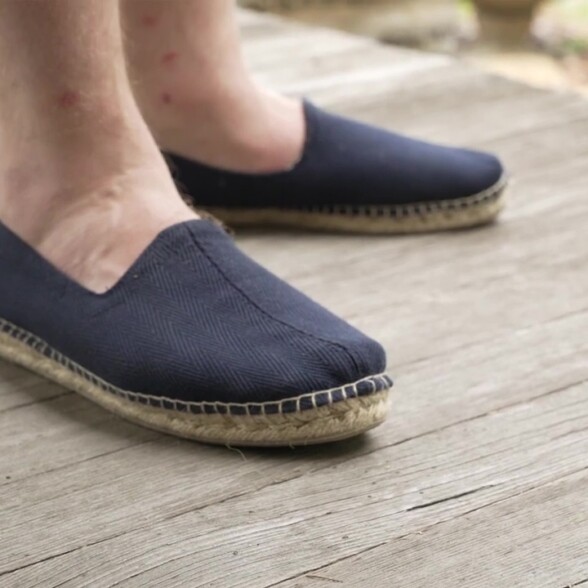
Opting for Fast Fashion
Espadrilles
For most of us in temperate climates, an espadrille isn’t necessarily going to be appropriate for year-round wear, so this might be a situation where you can bypass the higher-end offerings and get something from a fast fashion retailer – maybe a pair or two.
2. Have Patience
Continuing with the example of espadrilles, they also represent how more patience can be needed if you are going to shop for fast fashion. Since most fast fashion is going to follow current trends, a lot of it won’t be compatible with a truly classic menswear wardrobe, so if espadrilles aren’t currently trending, for instance, you’re probably going to have to do a bit more digging to find a good pair.
But, by exercising a bit of patience and being more discerning about what you are and aren’t willing to buy, you’ll be able to wade through all of the options and hopefully find something that works for you.
Top 7 Retail Shopping Mistakes
3. Buy Less
Speaking of being selective about which fast fashion pieces you buy, many fast fashion brands have such high profit margins on the goods that they produce that they do all they can to encourage consumers to buy more products than they actually need. How many times, after all, have you seen things like “buy two, get one free,” multiple seasonal sales, or countless promotional emails telling you to “treat yourself”?
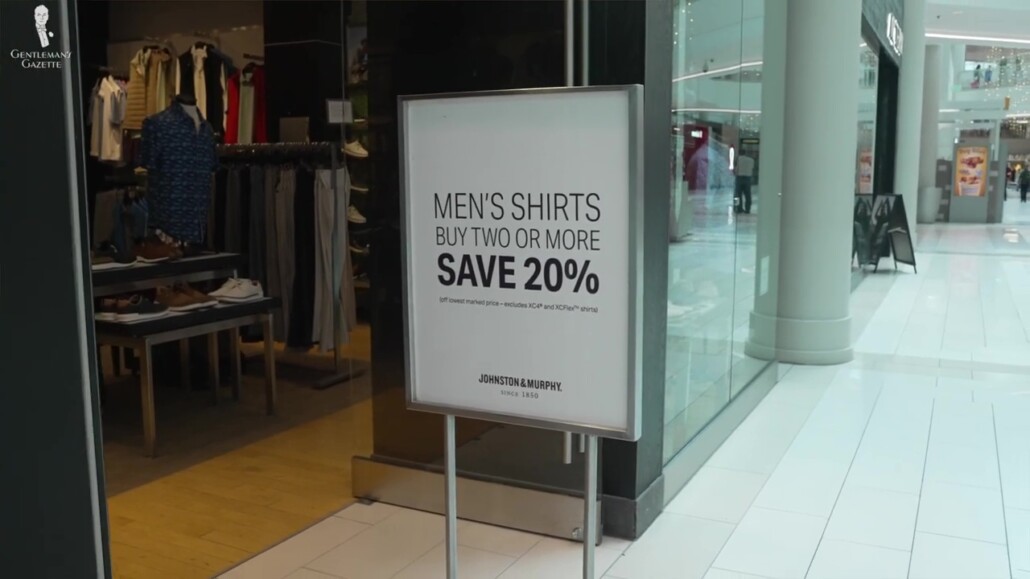
By being more intentional with what you’re buying, you’ll have a healthier rotation of classically-inspired clothing that will give you a good cost-per-wear over time. This, in turn, will save you more money and prevent you from making purchases that you might regret later.
4. Donate and/or Reuse
If there are some fast fashion pieces in your wardrobe that you’ve come to regret, the best thing to do is to pass them along if there’s still life in them.
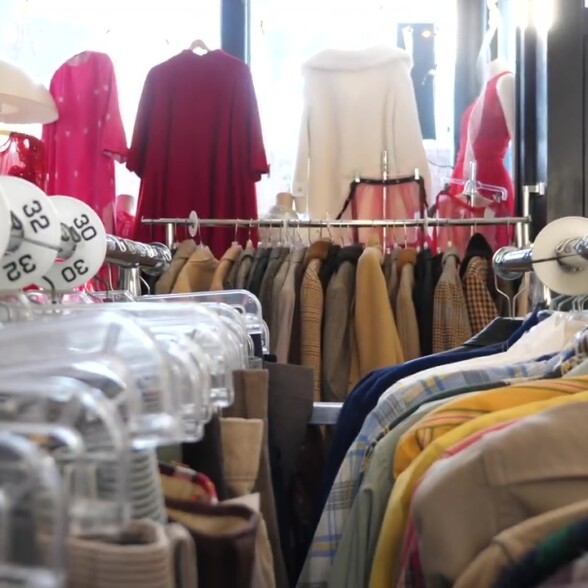
Extending their wear
Donate Clothing
By donating clothing, you’re not wasting it by simply chucking it in the garbage bin, but rather prolonging its life and giving it to someone who will appreciate it and wear it more regularly.
You can also turn an unwanted garment into an at-home or chore piece of clothing. When well-loved clothing gets past its prime for public use, it can certainly come in handy for domestic use. The bottom line is to keep fast fashion clothing in a cycle of use rather than just sending it to the landfill.
On a positive note here, several fast fashion brands do directly supply charities and thrift shops with clothing that they don’t sell in the allotted amount of time. So, whether it’s for these pieces or anything else, scout out stores like this if you’d like to be a more ethically conscious consumer.
What does our team wear at home?
Conclusion
In summary, let’s return to the comparison with fast food. It’s convenient and instantly enjoyable, but chances are it’s not going to be the healthiest option; however, when incorporated into an otherwise healthy diet and in moderation, it’s probably not going to do any lasting damage.
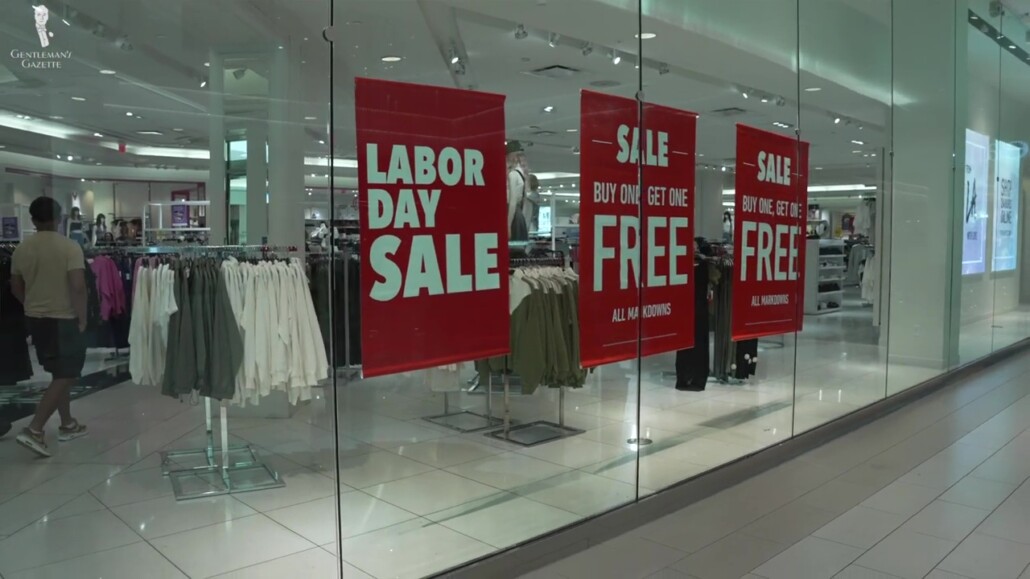
In other words, think of fast fashion as an option that can be utilized occasionally when it makes sense. For many of us, fast fashion has also served as a stepping stone that has fueled the fire of classic style in our own individual menswear journeys, and while we at the Gentleman’s Gazette will always strongly recommend seeking out higher quality, more sustainable clothing, whether that means saving up to buy higher-cost pieces or buying vintage, fast fashion can make sense in the right circumstance.
As an even more general reminder, considering the reason for and impact of your clothing purchases can make you have a healthier relationship with your wardrobe overall.
So, do you agree with our take on fast fashion, or do you think there were things we left out or didn’t give enough attention to? Let us know in the comments below.
Fast Fashion FAQs
What is fast fashion, and why is it a problem?
Fast fashion refers to the cheap and rapid production methods of affordable clothing made en masse. It’s an issue since it creates a number of environmental and labor issues across the globe when done at its current scale.
Is fast fashion a good idea?
Fast fashion can be a good idea if used in moderation. There are certain items where it can even be advantageous, like with seasonal clothing. However, relying too much on fast fashion will hurt your wardrobe in the long run.
Should I not buy fast fashion?
You can buy fast fashion, but we’d personally recommend buying it in moderation. This type of clothing will wear out quicker over time than slow fashion and will not be as sustainable if frequently worn.
Is it ethical to buy fast fashion?
There are a number of ethical concerns when buying a large amount of fast fashion, but we don’t see any major concerns when done sparingly.
Outfit Rundown
Today, I’m wearing a casual ensemble good for the late-summer warm temperatures we are currently experiencing here in Minnesota. My black and gray polo shirt, featuring a pattern of variegated stripes, actually comes from Nike. It might not necessarily be fast fashion as much as athletic wear, but the two concepts are definitely adjacent and overlapping.
Meanwhile, my plain black trousers, which come from the Michael Kors brand, are something that you could find in a typical department store. My black leather belt is also a department store purchase, and in fact, it’s reversible with black on one side and brown on the other.
My shoes are black penny loafers from Allen Edmonds that are definitely well-worn and well-loved. They could certainly use a shine here, and I’ll probably have to replace them sooner rather than later. Because they do have rubber soles, they’re not as easily re-craftable as many of the other options that Allen Edmonds offers, and this is why traditional dress shoes are a non-fast fashioned choice compared to department store models, as their Goodyear welting or Blake construction means that they can be re-soled, prolonging their wearable lives.
In the outdoor footage you’re seeing, I’m also wearing my trusty coconut straw pork pie hat, and, for the casual nature of this guide, I’ve decided to let my beard grow out as well.
Rounding out my ensemble today are two pieces that are definitely not fast fashion; the first of these are my two-tone shadow-striped socks in black and white from Fort Belvedere. The other is the fragrance I’m wearing today, Marzocco, from the Roberto Ugolini collection. This is a warm and well-rounded scent with notes of vanilla and assorted fruits, and in addition to just being a fan of the fragrance, I selected it today as it seemed a good choice for the warm weather we’re currently experiencing.
So, for the socks I’m wearing today, in addition to a wide array of other high-quality men’s accessories and fragrances from the Roberto Ugolini collection, you can take a look at the Fort Belvedere shop.

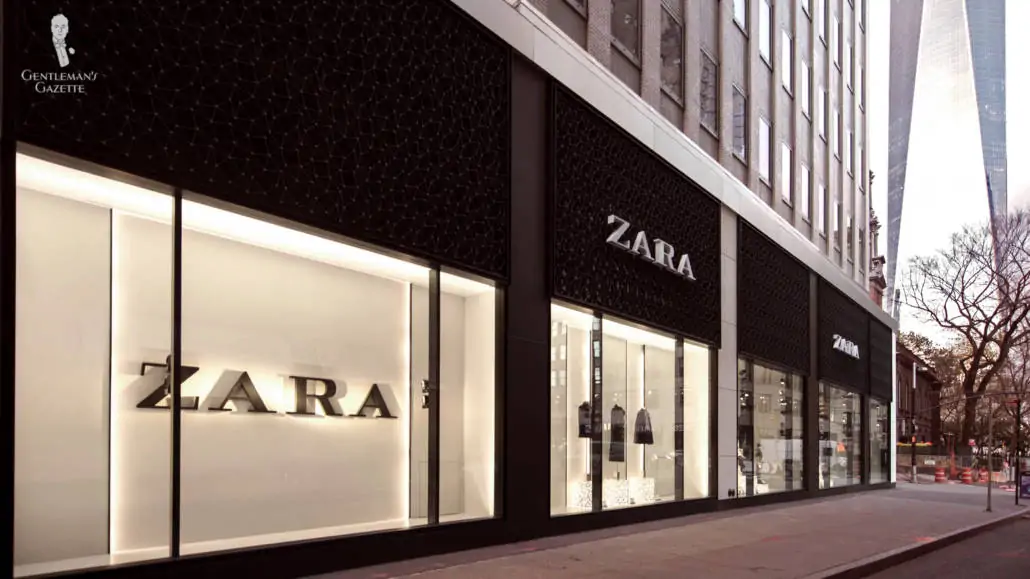
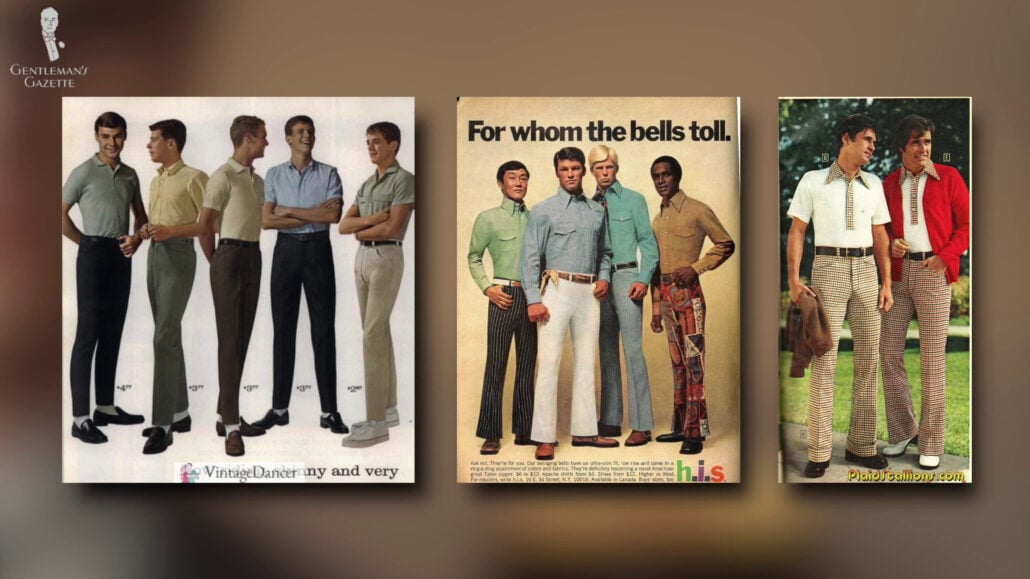
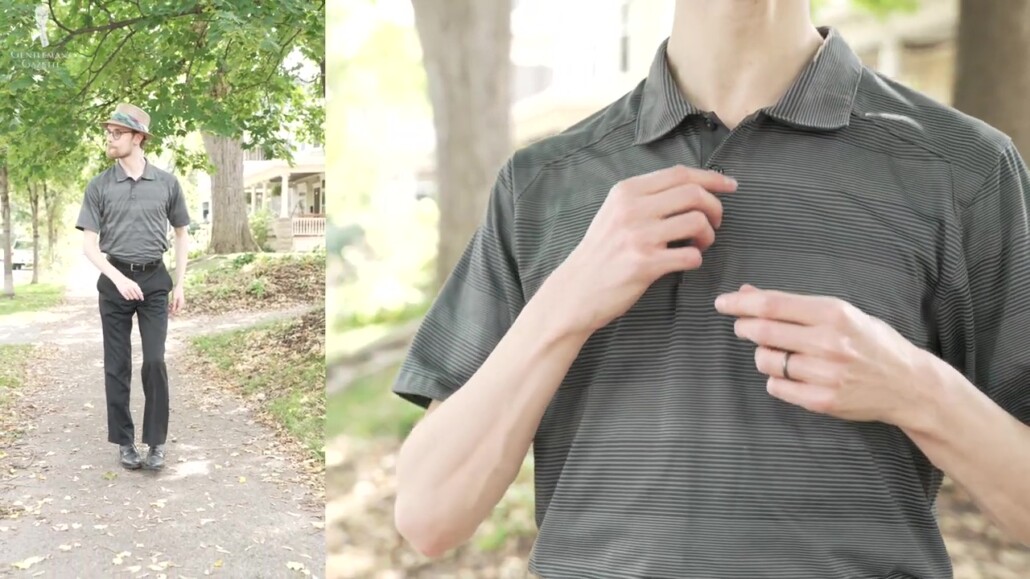
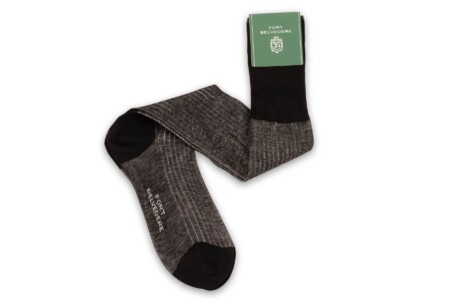
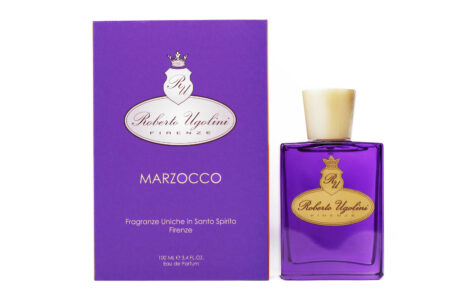
Hi Preston,
Does Sven make you buy all the socks you keep talking about or do you just wear them for the photo and then give them back? Or does Sven make you hire them from him for the photo?
There’s two whole articles about Preston’s wardrobe so check out those :)
I personally have many fast fashion items, primarily because I have a love for casual wear as much as I do for classical wear, especially on weekends. I do, however, use some fairly specific personal guidelines and I generally only purchase 2 or 3 items each season. I certainly lean to the more classic side of fast fashion. I rarely purchase anything trendy unless it is a classic that is trending.
Most items I have are more than a few years old and any item of clothing usually lasts for a minimum of 10 or so
years, so I don’t worry to much about adding to the landfills with my fast fashion purchases.